API is a well-known word these days as everyone uses different APIs for their business or personal needs.
Nowadays, building an API is super easy with various tools available in the market. Almost every organization is changing its infrastructure model to a microservice architecture.
Since competition is really high in the market, you need to create innovative software application projects that can solve your customers’ pain points.
In this modern era, everyone seeks faster results. So, it is necessary to think of a concept to provide faster services to the end-users.
But creating an API can be done manually or automatically as per your business needs. Many business owners use REST services through HTTP to receive data, whereas others use automation services for their API development and tests.
If you compare API testing with UI-based testing, it is evident that the API test will prove its true power as it is speedy and more reliable than UI-based tests.
So, before you start knowing about the tools to build your API and test it, let’s understand what an API is and how it fits software development and testing.
What is an API?
Application Programming Interface (API) is a set of standards, requirements, or instructions that allows software or an application to provide service to another application, device, or platform for better use of the software or app.

In simple words, it is a way for various computer programs to talk to each other. The use of API is growing day by day as it is very powerful yet simple to use in any software or platform. Here, developers use someone else’s work to build their application.
Example: When you use any application or software on your mobile device, the application connects automatically to the internet and sends some data to the server. The server receives the data, interprets it, performs essential actions, and sends it back to your device. As a result, the application analyzes the data and shows the information in a readable way. All this happens through an API.
How does an API work?
API provides a way to communicate applications and computers with one another. It acts as an intermediary layer between the application and web server to process data transfer.
Let’s dive deeper to understand the step-by-step process of how it works.
- A client software or application initiates a request to receive information. The same request is processed through API’s URI or Uniform Resource Identifier from the app to the webserver. It includes headers, a request body, and a request verb.
- Once it receives the valid requests, it makes a call to the external web server or program.
- Now, the API gets the requested information from the server.
- It again transfers the data to its origin or initial requesting app in a readable way.
API calls include authorization information to minimize the risks.
Why are APIs Essential?
Whether designing new tools or managing the existing ones, you can use API to simplify the workflow. Some of the benefits of having an API in your company are as follows:
Improved Collaboration
With the use of an API, many applications, software, and platforms communicate with one another. Enterprises can automate the workflow by integrating API with business applications. This way, you can improve the collaboration between your entire workforce.
Without API, many industries will face performance and productivity loss due to the lack of information share and connectivity.
Data Monetization

Many businesses offer free API at the start for small use and charge a good amount when a company seeks more. Here, companies want to build a relationship between the audience of developers and potential business owners. You can further get access to digital assets from where you can monetize your business by selling the access.
For example, AccuWeather builds a self-service portal to sell API packages, and today it attracts many developers in the process.
Easier Innovation
APIs provide flexibility to the companies in establishing firm connections with their business partners. It offers new services to the existing market and access to new markets to generate returns and drive transformations.
With just a little start of innovations and tactics, you can extend your community to fulfill your rest through the product or services you offer.
Security
As mentioned above, API creates a security layer between the server and the data. Developers can strengthen the security through signatures, TLS encryptions, and tokens. You can authenticate and manage traffic by implementing API gateways and practicing effective management.
Examples of API
API is used as a necessary food for every business. It has several uses, such as:
- Universal logins
- Booking comparisons of travel, flight ticket, train ticket, etc.
- Google maps
- Third-party payment processing
- And a lot more
Now, let’s understand what API development and testing are and how it is beneficial in today’s era.
What is API Development?
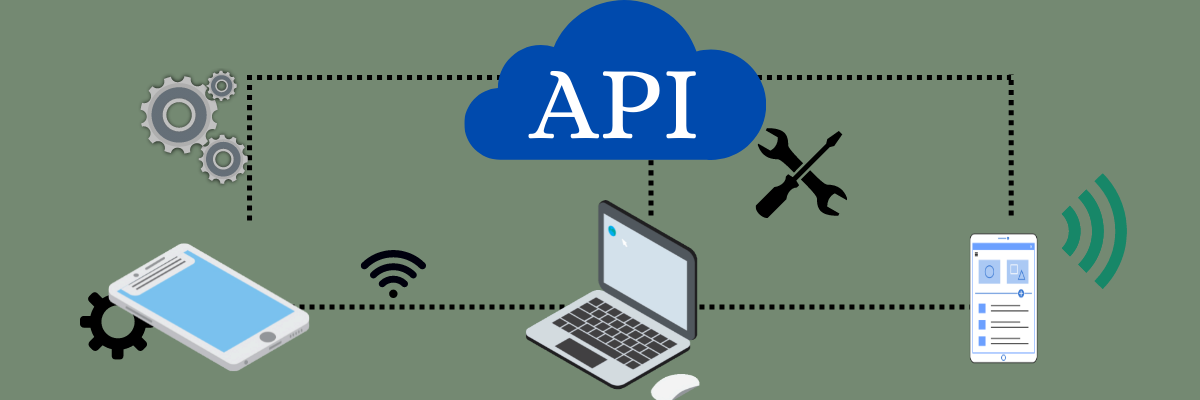
Building, developing, or creating an efficient API is crucial for businesses. Some companies build their APIs and use them internally to offer a good browsing experience for customers.
This is not the end. You can let your developers integrate third-party API in your business application or platform to have the same benefit. Many web applications would not have been possible without the use of APIs.
What is API Testing?
API testing is a practice that tests an API’s performance, reliability, security, and functionality directly through various tools. Here you can see if an API can meet the expectations by performing the same procedure as the end-user to get the information.
Through API testing, you can ensure the possibility of getting good responses in real-time via true reports. If an API returns the perfect response of the expected format in the correct time, the API quality is good. The actual performance and quality can be decided by making thousands of calls simultaneously.
API testing includes SOAP web services and REST APIs with XML or JSON message payloads. It is the most suitable form of test automation than UI-based testing in terms of system complexity, short release cycles, and fast feedback loops.
You can perform various tests, such as validation, functional, load, reliability, fuzz, penetration, and security tests.
Now, we will see some of the best API development and testing tools that will help you grow and enhance productivity.
API Development Tools
Hoppscotch
Hoppscotch is an open-source API development platform that is lightweight and fast with respect to sending requests and copying responses in real-time.
It offers various HTTP methods, such as:
- GET: Requests retrieve base information.
- POST: Server will create a new entry in the database.
- PUT: Update the existing resource.
- PATCH: Similar to ‘PUT’ but helps in the partial update.
- DELETE: Delete related component.
- HEAD: This will help retrieve response headers identical to the GET request without the response body.
- OPTIONS: Provides communication options for the target source.
- CONNECT: Offers a tunnel to a server.
- : This allows you to use custom requests like LIST.

You can find customizable combinations for the foreground, accent colors, and background. Choose a theme according to your wish, including system default, light, black, and dark. You will get various options for accent colors, such as Teal, Indigo, Yellow, Red, Pink, Orange, Purple, Blue, and Green (default).
Install it as a PWA on the device and get low memory and CPU usage. You can also add it to your home screen to get offline support. In addition, you will get a retrieve response in no time from the endpoint just by following three steps:
- Choose the method
- Enter the URL
- Send
With a single TCP connection, you can establish a complete duplex communication channel. In addition, get an HTTP connection without polling and resorting to receiving a stream of updates. You can also send or receive data with the help of the SocketIO server.
Furthermore, you will get MQTT, GraphQL, authorization, headers, parameters, request body, collections, pre-requests scripts, API documentation, keyboard shortcuts, and more API development tools.
Postman
Build and publish APIs together with the Postman API development ecosystem by downloading the desktop application or signing up. Postman is an API development platform for building APIs. It simplifies every step of the API lifecycle and streamlines the collaboration so that you create faster and better APIs.
You will get comprehensive tools to accelerate the lifecycle from design, mocking, documentation, and testing to discovery. Collaborate, iterate, and store all the API artifacts easily in a single central platform used by your teams. In addition, organize the API work to collaborate with your teams throughout your organization, no matter where they are located.
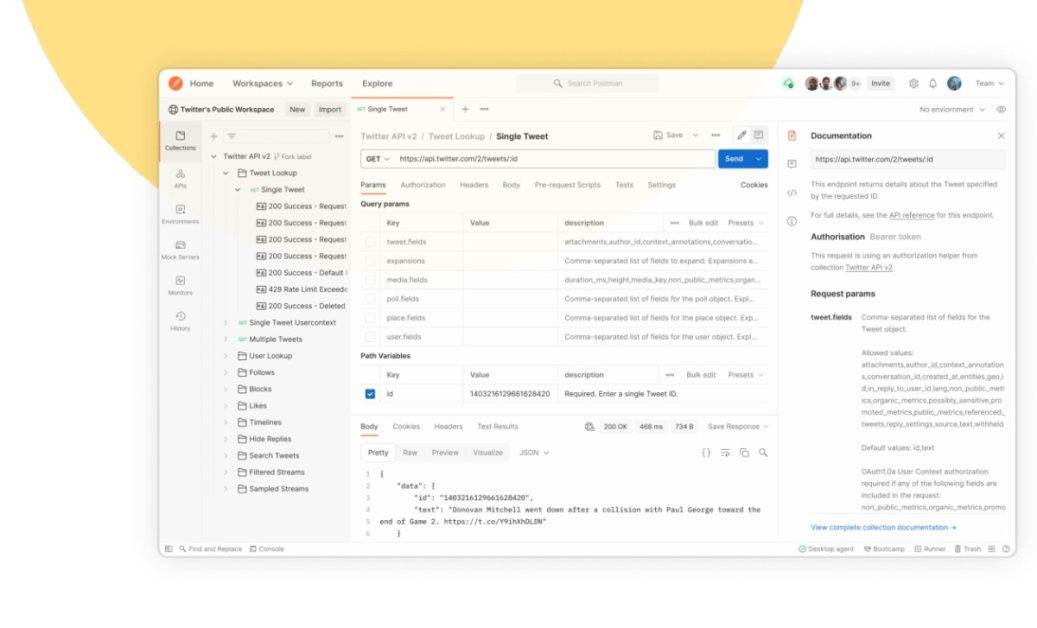
Postman offers advanced insights on all the API operations and intelligence through security warnings and alerts. Choose from three separate Postman workspaces – personal, public, and team workspaces.
Integrate Postman with your essential tools in the software development pipeline to activate API-first practices. You can also extend the Postman platform with open-source technologies and Postman API.
Sign up and start your journey for free. You will also get advanced pricing options and flexibility with Postman. The pricing starts at $12/month/user when billed annually.
Swagger
Swagger simplifies the API development process for enterprises, teams, and users with its professional and open-source toolset. It helps you design and document the APIs at scale and streamline your workflow with OpenAPI specifications.
Keep your documentation, design, and implementation synchronized automatically. You can develop APIs of your choice in a tech stack with server templates and client libraries. You will also get an entire format of design APIs and define resources before writing code.
Let your external consumers and internal developers visualize the APIs operations to adopt API quickly. It is supported by various API gateway like IBM, Apigee, AWS, etc. Design your API in a robust editor that renders API definition and provides error feedback in real-time.
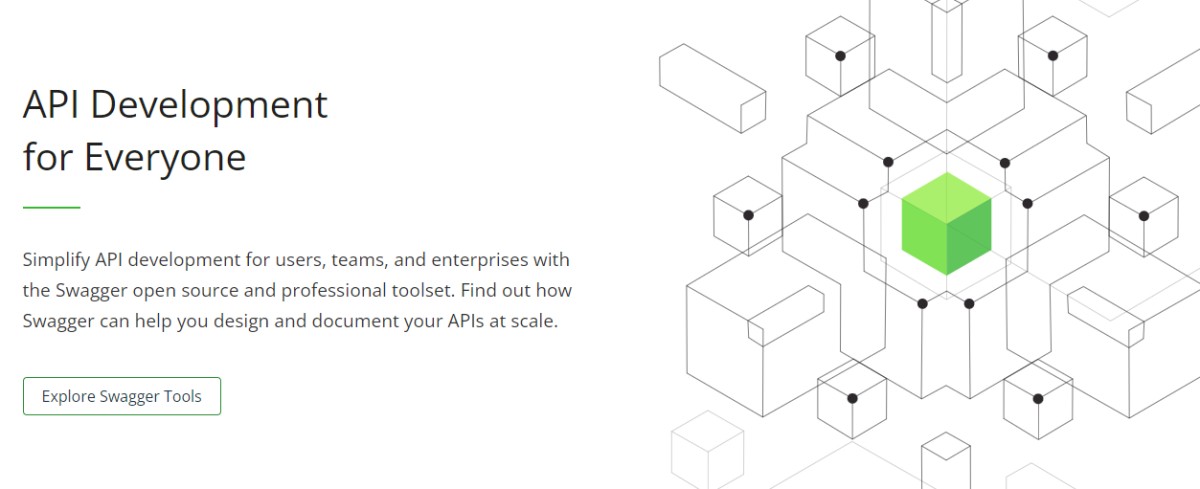
Furthermore, generate client SDKs and server stubs with minimal plumbing to enable API consumption. You can also generate documentation from the OpenAPI definition for easier consumption and visual interaction. SwaggerHub is a source of truth for your API development that helps accelerate the API delivery process and the quality through collaboration and standards.
SwaggerHub enhances your approach to developing APIs of your choice and integrates with your trusted tools to push API’s design and management platforms.
Insomnia
Build APIs according to your business needs with Insomnia, a design platform that delivers high-performing and high-quality APIs through collaboration and standards. It will help you quickly send SOAP, GRPC, GraphQL, and REST requests within Insomnia with its streamlined API client.
Accelerate your design process with OpenAPI specifications and catch centralized standards and issues to adopt a workflow that works better with your tools.
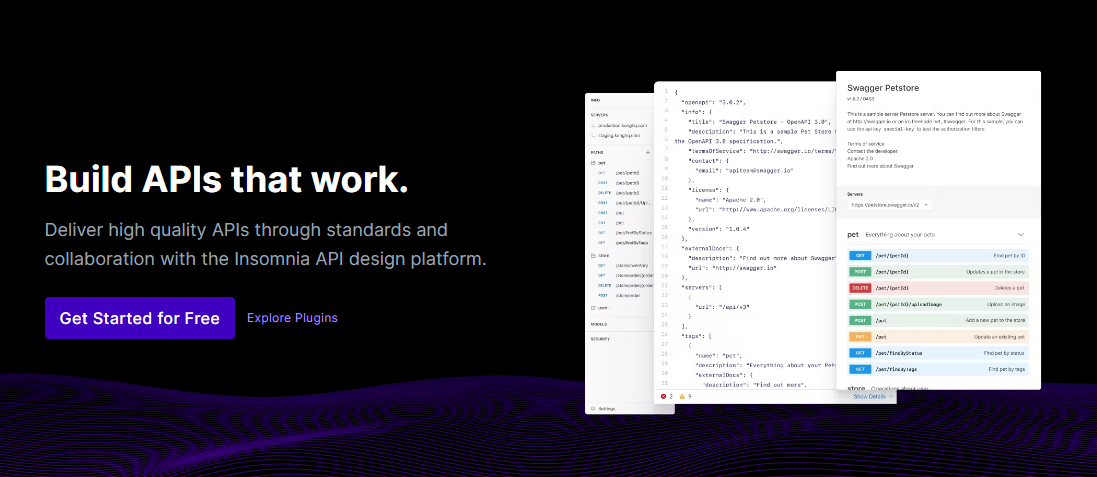
Instantly preview the API designs without switching applications or views and maintain consistency across your designs. You can connect with Git providers directly to sync your design changes and enable GitOps pipeline with Inso, which is an Insomnia CLI tool.
Download the Insomnia application for free and get updates, API client, design APIs, and test APIs options. Start individually at $50/user/year for other benefits like unlimited devices, E2EE sync, etc.
Sandbox
Accelerate API development process with Sandbox and quickly mock SOAP web services and RESTful API. Generate from instant deployment, debugging tools for integration, API definitions, and collaborative build.
Quickly stub fault injection and SOAP web services or RESTful API with dynamic responses to simulate application behavior in real-time. Use your RAML API, OpenAPI, WDSL, or Apiary documentation to generate mock web services automatically.

Add simple or dynamic behavior to the stubs as you need and scale your test environments instantly by deploying new mock web services that meet your testing needs. Sandbox framework is an open-source platform, and you can run Sandbox mock webs services on Github.
Start simple with XML or JSON canned responses and make your mock services intelligent so that your apps can make API calls to get a similar response. You can also spot failing requests quickly and get a complete insight into the integration problems.
Get all your team members on the same page by managing and centralizing all the stubs that ensure absolute consistency and release your final product with confidence.
API Testing Tools
SoapUI
Accelerate API quality test with SoapUI allows you to manage, create, and execute all kinds of tests on SOAP, GraphQL, and REST APIs to help you deliver better software. It is an open-source platform that provides the most straightforward way to start your API testing journey.
Fit and automate API testing into the team’s continuous delivery pipeline. Let your team perform better with the next-gen tools specially built for validating SOAP, microservices, REST, GraphQL, and other web services.
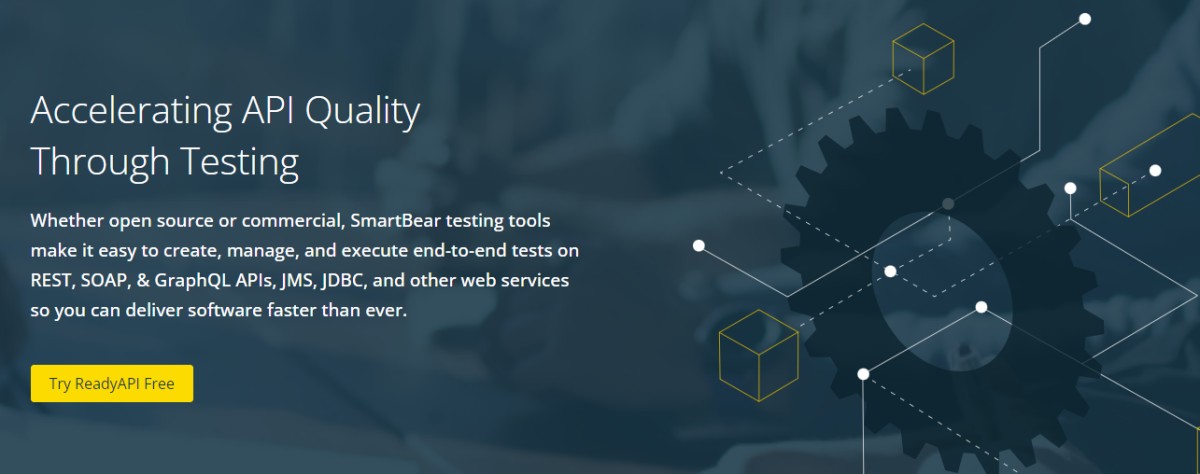
Test your API smarter and faster with data-driven testing and save money and time with the properly designed, tested and built API. Furthermore, get the essential resources and ensure your API functions the way you want every time. You can also secure all your APIs, including third-party APIs, vulnerable internal APIs, and Public APIs.
Get comprehensive and detailed API test reports to improve API testing and measure success. SoapUI is useful for individuals or users working in a single environment and for small to enterprise teams working in production, staging, or internal environments.
Start your API testing now and benefit from third-party integrations, future-proof services, and scripted test creation. Take a 30-day free trial to dig deeper into the features.
LoadView
Get dynamic and robust API load testing for your business and individual needs with LoadView by dotcom.monitor. It supports RESTful APIs, such as XML and JSON, and web APIs and SOAP that require multi-step execution or authentication.
Perform a large number of API calls the same way your users do to uncover problems and solve them. Take your testing to the next level of functional constraints to analyze systems under stress in real-time. You can also test your system properly to define API tests and simulate the traffic at the desired speed.
With the help of a little overhead, you can scale up easily from a single user to thousands. LoadView offers flexible performance testing for the DevOps teams. Check if your website can handle stress by generating a load with some sets of users over a specific time period.
Ensure your website is always up for increasing traffic and validating SLAs and capacity plans in production environments. You will gain a complete overview of your website performance on how your website reacts as load levels fluctuate. You can also determine the system’s overall performance under specific scenarios and improve development.
Setup the load test in minutes and start your free trial. LoadView has various plans for your continuous testing needs, such as monthly subscriptions, annual subscriptions, etc. The pricing starts at $159/month.
Hurl
Hurl is an efficient command-line tool that runs HTTP requests in a simple text format. It performs requests, evaluates queries, and captures headers and body responses values.

You can use Hurl for testing HTTP sessions and fetching data. It supports various predicates and queries, such as JSONPath and XPath, to assert response headers and status codes. Additionally, it will enable you to test the performance of HTTP endpoints.
Hurl is a lightweight binary written in Rust that’s easy to install without any runtime. Moreover, it adds organic sugar to run tests on HTTP requests with its text file format for DevOps teams and individual developers.
HTTPie
HTTPie is a simple and robust command-line API and HTTP testing client. It is built from the ground up for better testing experience and debugging capabilities of APIs, web services, and HTTP servers. You will get the intuitive and expressive syntax for your API testing and full JSON support.
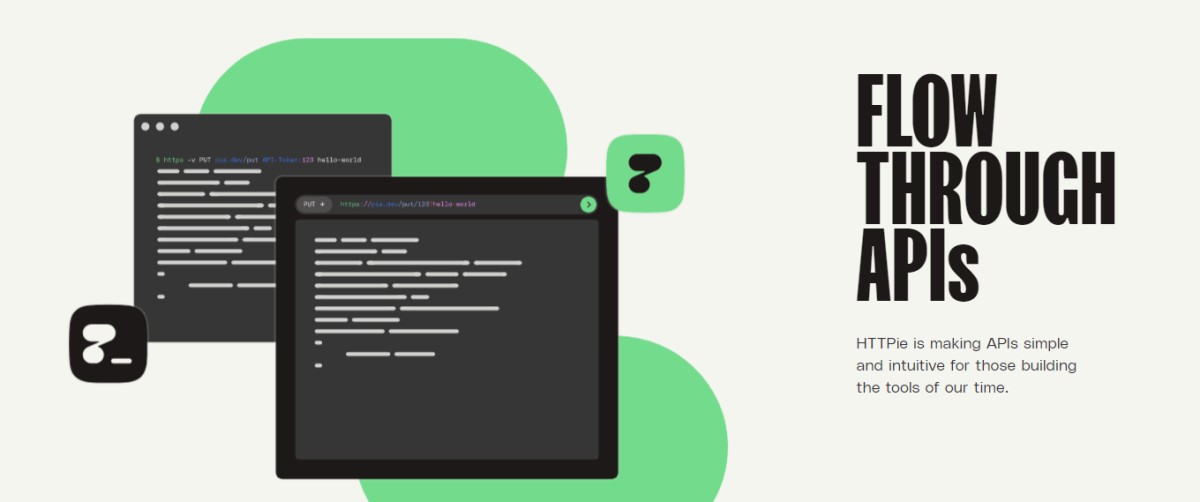
Get well-maintained, formatted, and colorized terminal output with sensible defaults for your API era. In addition, you will get persistent sessions, file uploads, forms, proxies, authentication support, and HTTP. You will also get API extensions for better authentication capabilities and support request headers and data for your API testing.
HTTPie can be installed on any operating system, including Windows, Linux, macOS, FreeBSD, etc. Get a complete guide for installation and various plugins for better testing results. You can also create and send arbitrary HTTP requests with HTTP and HTTPS commands.
Dredd
Dredd is an API testing framework used by many developers to build a better API for end-users. It is a language-agnostic CLT for validating API definition documents against the backend implementation of an API.
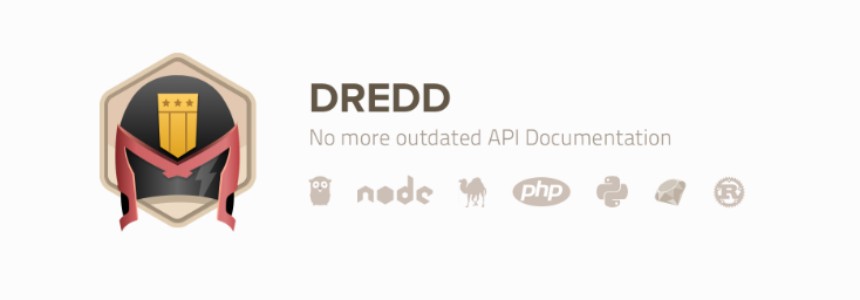
Dredd reads the API description and validates step-by-step if the API replies to the responses as per the description in the document. It supports API Blueprint, OpenAPI 2 (Swagger), and OpenAPI 3 (Ongoing experiments).
Furthermore, it supports writing hooks that are a code for every test setup. The supported languages are PHP, Perl, Python, Ruby, Rust, Node.js, and Go. You can install Dredd in any operating system, from Windows and Linux to macOS.
Conclusion 👩💻
End-user experience is the key to creating a successful API. This is why developing and testing an API strategically is crucial. The API development and testing tools mentioned above will help you do that so you can deliver the best services to the end-users and improve their overall experience.
You may now look at the best API Monitoring Tools.



